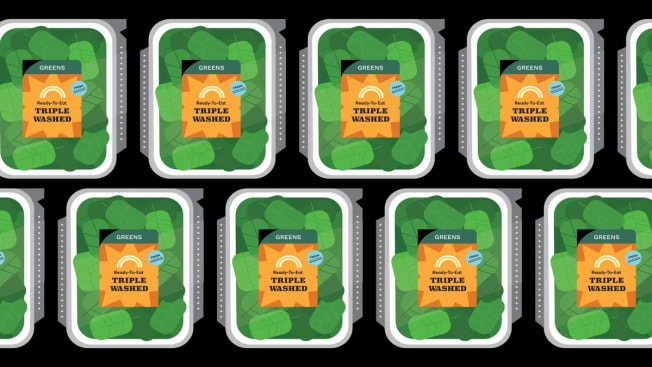
By Pang-Chieh
I’m not saying I hate bugs, but I appreciate a good distance between them and me. This week I’m spotlighting our tips on how to ward off mosquitoes, ants, and ticks. Also in this issue: What common salad labels mean, and a quiz to determine whether you need hearing aids.
THE BIG STORY: ‘Ticks All the Right Boxes’
With the weather getting warmer, some of you might already be deep into fortifying your defenses against bugs. I know I am, as someone who’s a mosquito magnet no matter which social group I’m in.
Bugs can be a pesky problem during summer, so here’s our advice on how to keep some of those most annoying little critters at bay.
How to keep mosquitoes and ticks away.
Make sure to rid your home of any standing water, the preferred breeding ground of mosquitoes. Skip citronella candles and battery-powered diffusers that blow out geraniol—they’re not effective at keeping mosquitoes away.
For ticks, make sure you mow your lawn. You can consider putting up a fence around your property to keep out deer and other large animals that can carry ticks.
When you go out, wear long sleeves, long pants, socks, and closed-toe shoes, and avoid tight clothes, dark colors, perfume, and aftershave to ward off mosquitoes and ticks.
And of course, a big part of personal protection is to apply insect repellent. Here are the five top-rated insect repellents (available to CR members) recommended by our experts.
Will this tick make you sick?
Different types of ticks transmit different diseases, so being able to identify the tick you’ve been bitten by is important. The blacklegged tick, for example, which is found throughout the eastern U.S., can transmit Lyme disease, and the American dog tick can transmit Rocky Mountain spotted fever.
Check here for a visual guide of six common tick species and which diseases they can transmit.
How to get rid of ants.
In the warmer months, house and carpenter ants are the types that are most likely to show up in your home. And I’m sorry to inform you that by the time you spot them inside, there might already be hundreds.
According to pest management experts, here’s what you need to do to make sure your home doesn’t get infested with them: Keep your home clean, and eliminate any damp spots or rotted wood.
Set up ant baits, but stay away from bug barrier sprays. Sprays are ineffective, and some of these sprays contain endocrine-disrupting chemical compounds, which can alter our hormones.
Ants are also unlikely to march into your home if you make the outdoors more appealing to them and keep your lawn in good shape. It’s easier to do that with good gear, like the best lawn mowers and tractors rated by us (available to CR members).
MUST-READS OF THE WEEK
☀️ Best Sunscreens of 2023 (available to CR members)
We’ve tested dozens of sprays and lotions to determine how well they will protect us against radiation from the sun’s ultraviolet A and B rays. Here are the best.
🚴♀️ Bike Riding Safety Tips for New and Experienced Riders
Tip: It’s best to always use front and rear lights, even during the day. And don’t underestimate the importance of a good pair of cycling gloves.
📺 Turn Off These 3 TV Features for Better Picture Quality
They might sound like performance boosters, but they’ll actually make your TV look worse.
LABEL DECODER

The Tom Agency
Labels on packaged salads can sometimes be confusing, leaving you wondering, “What does this actually mean?” So here are some of the most common labels explained.
“Fresh”
It “means that the food is in its raw state and has not been frozen or subjected to any form of thermal processing or any other form of preservation,” according to the Food and Drug Administration.
Note of caution: This label doesn’t address when the greens were harvested, and those that were washed in a mild chlorine solution can still be labeled fresh.
“Triple-washed”
This or ready-to-eat greens are typically rinsed to remove dirt, debris, and grit, then washed in water that contains chlorine or another sanitizer, and finally rinsed.
Note of caution: This washing process can remove up to 99 percent of harmful bacteria on contaminated greens, but it doesn’t mean it’s 100 percent clean, so bacteria could remain.
What about the terms “pesticide-free” and “non-GMO?” You can read more of our decoding here.
THE FINAL WORD
If you want to know whether you might suffer from hearing loss, try out this quick quiz.
Consumer Reports is an independent, nonprofit organization that works side by side with consumers to create a fairer, safer, and healthier world. CR does not endorse products or services, and does not accept advertising. Copyright © 2023, Consumer Reports, Inc.